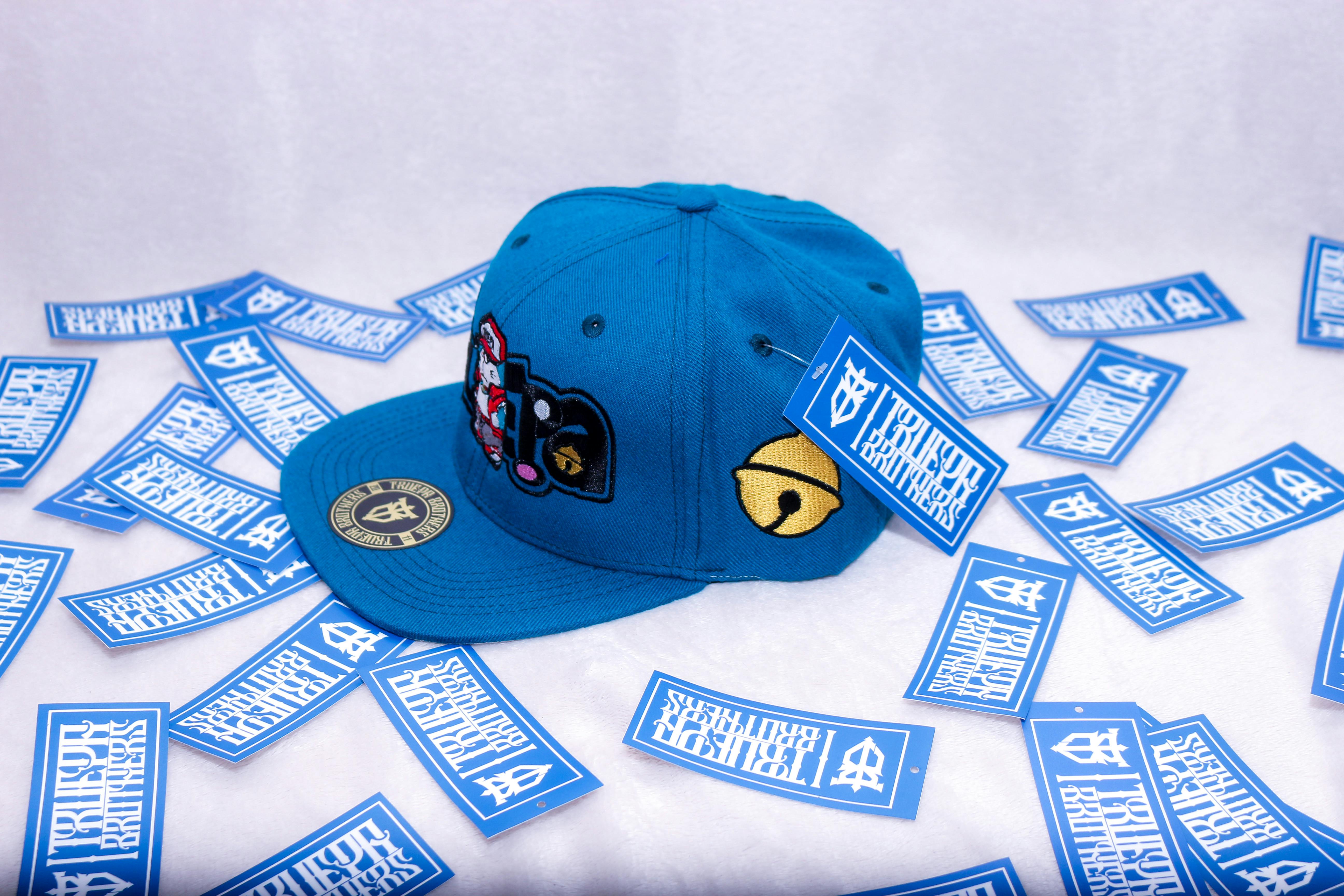Marketing your business requires many tactics and initiatives. With so many companies and advertisements competing for attention, it can often be hard to break through the noise. By using stickers to advertise, you can connect with your audience in a different way.
Stickers are versatile — you can place them almost anywhere. This means that windows, walls, cars, laptops, sidewalks, doors, machinery, packaging, and more can become part of your advertisement campaign with the placement of a sticker. Branded stickers can also have the added benefit of showing a type of endorsement when your current customers display them. It showcases their brand loyalty and could influence someone else to check out your business.
Stickers can create a strong connection when they align with your brand values and the things important to your customers. Developing a sticker marketing strategy helps you define that connection and execute on it.

What Is a Sticker Marketing Strategy?
Simply put, a sticker marketing strategy is a plan for using stickers to meet a specific advertising goal. For example, the goal could be to increase purchases of a particular product. One of the tactics could be to design a sticker series that features the project and its tagline with a QR code. If a person scans the QR code, they arrive at a webpage about the product. If customers make a purchase through this channel, you can track it and attribute it to your sticker campaign.
What Should a Sticker Marketing Strategy Include?
If you already have a strategy template for other marketing initiatives, many of its principles will likely carry over. However, there are some specifics to consider when it comes to sticker marketing. In general, your sticker advertising strategy should address these factors:
- What is your goal? Define what you want to achieve with stickers. Some examples are brand awareness, improving social media engagement, selling more products, driving more traffic to your website or physical store, or launching a product.
- How long do you expect your goal to take? Put a timeframe on achieving the goal. While stickers can continue to deliver value, you’ll want to define a timeframe in which to achieve it.
- What’s your budget? Every marketing campaign has a cost, and it’s a good idea to set a budget so you don’t overspend. Your expenses will be the stickers themselves as well as anything else you need to execute the campaign.
- How will you get your stickers to customers? For sticker marketing to work, you have to distribute them to your customers and continue to expand your reach. There are many ways to do this, such as including them in e-commerce orders, making them available in physical stores, or distributing them at events.
- What metrics will you track, and how? Attribution in the physical world is more challenging than the digital one. However, there are ways to do this, such as using a QR code. You can also include a special URL, code, email, or phone number tied directly to sticker marketing. If you receive inquiries from these, you can attribute them to that campaign.
Sticker advertising campaigns offer some unique opportunities to promote your brand. Taking advantage of these can make them a powerful tool in your marketing strategy.

Reasons Why You Need a Sticker Marketing Strategy
Creating a strategy may seem like a bit of work, but you don’t want to go into this type of campaign without some parameters. Otherwise, you won’t be able to show a return on such an endeavor.
It’s a Cost-Effective Marketing Tactic
Most marketing campaigns are expensive — companies can spend between 9% and 18% of their budgets on marketing costs. This means it’s important to make wise use of your marketing dollars to get the best return on investment (ROI).
Most marketin endeavors require significant investment. Search engine marketing can cost you thousands a month. Display ads and social media ads can wipe out a budget fast, too. Direct mail certainly isn’t cheap either.
Stickers, however, are extremely cost-effective. You can print a high volume of stickers consisting of high-quality vinyl for very little. Additionally, the more you buy, the less you spend per piece.
Because stickers are so budget-friendly, you can quickly scale up your campaign once it takes off. You won’t feel the pinch of extra costs like other marketing tactics. Because the investment is small, any returns you get can make up for this. When giving away stickers for marketing, your expense is just the fees for the stickers themselves.
If you purchase 5000 stickers, it would cost you $200 or less. You then distribute those stickers in ways that don’t incur any other costs, such as placing them in shipping boxes or giving them out at events or in-store. If only a few people see the sticker, respond to it, and make purchases, your ROI is already positive.
Stickers Aren’t Disruptive Marketing
In the modern world, advertising is coming at us from every angle — so much so, that nearly half of Americans have become frustrated by online advertisements alone. Others tend to be “ad-blind,” and learn to ignore anything that appears to be an advertisement. The reality is that digital advertising, as well as advertising on TV and the radio, are disruptive. Stickers, however, are not.
People encounter stickers in the real world. They often aren’t blatant advertisements either. Just having a die cut sticker of your logo becomes a brand piece but not an ad. If you use humor or a special message, customers may read it. Now, this prospective customer is wondering about your business and could seek you out online or in-store.

Stickers Are Perfect for Your Loyal Customers
Stickers act as endorsements for your brand. But you don’t need a social media influencer to post one to get attention. When someone sees a brand sticker on someone’s laptop or bumper, they immediately know the owner of the sticker is loyal to your brand.
That’s a powerful message. After all, 88% of customers are more likely to trust product recommendations from people they know. In other words, most consumers look to others for recommendations and to determine the quality or reliability of a brand. While you can say all day long that you have the best cookies in the city, it will mean more to prospective customers for a friend who is a current customer to say that.
Stickers Can Promote Many Industries
Stickers don’t have to be brand- or product-centric. They can also be educational and offer helpful information. For example, health food stores could develop stickers with food facts to promote a better diet. Another idea is to include instructions on doing everyday tasks related to your business. These stickers would have your logo and branding but also be useful to people. This makes people more likely to stick them somewhere visible and keep them there.
In the case of specific campaigns or events, consider developing themed stickers. For an event, start distributing them early; they could even serve as a save-the-date announcement. While your sticker real estate is small, you can include a QR code or short URL to guide people to find out more about the event or register for it.
Stickers Are Durable
If you use a high-quality vinyl sticker, you can be sure that it has staying power. Cheap stickers won’t last as long, so consider this. You don’t want something you give away that has brand messaging to be low quality.
Vinyl stickers are waterproof and weatherproof so they can withstand the elements or even the dishwasher.
In most cases, a sticker can last for years. However, if someone wants to remove them, it won’t take a lot of elbow grease. They typically peel right off even if they’ve been in the same place for years. With a sticker, you’re giving away a piece of your brand story. When they’re durable, that sends a great message to your customers: that they can depend on you.
Can Any Business Execute a Sticker Marketing Strategy?
Any company can leverage stickers for branding and promotion. Since they’re so cost-effective, the barrier to using them is low as opposed to other marketing initiatives.
All you need is a strategy and a goal on how you’ll use them. You can start small by just giving them away to customers in orders. In this first wave, you can see if there has been any return. If you see positives, then expand on how you use them with some of the ideas we’ve provided above.
Types of Stickers for a Marketing Campaign
No matter how you decide to use stickers for marketing, you have many options to choose from regarding shape and size. Let’s look at those.
- Die cut stickers can be any size or shape following the lines of the design. They’re cost-effective and make your logo pop.
- Rectangle stickers, square stickers, and circle-shaped stickers provide you with plenty of space to deliver a message or instructions. They’re ideal for educational or useful information.
- Bumper stickers are an excellent option for fun or important messages. People put these on their cars to show their loyalty or position on something. These stickers need to be UV and weather-resistant since they’ll be exposed to the elements.
- Kiss cut stickers can be cut right up to the edge of your design, even if it’s complex or has a lot of detail. They’re a good choice for promoting a product or event.
- Clear stickers print on clear vinyl so they can go on transparent surfaces such as a window or glass for more impact. They would be good for other businesses that might display your brand as a partner.
- Reflective stickers are a great way to stand out, as they add glimmer which can help draw attention.
- Holographic stickers are printed on an iridescent, shiny vinyl that gives a rainbow-like effect.

You can also use options like sticker sheets, which offer a cost-effective way to print multiple stickers. They are typically 8.5 inches by 11 inches and peel off easily, so you could use these at events.
When it comes to running an effective marketing campaign, stickers offer a versatile, persistent tool that can increase visibility without needing to rely on billboards and other traditional marketing means.



